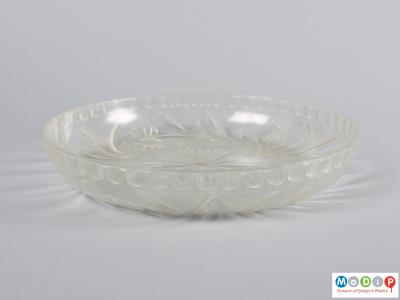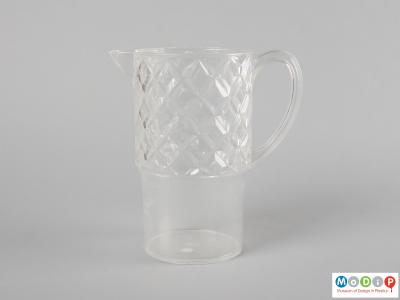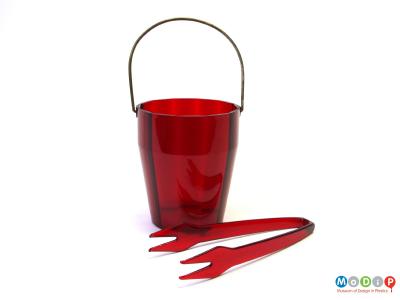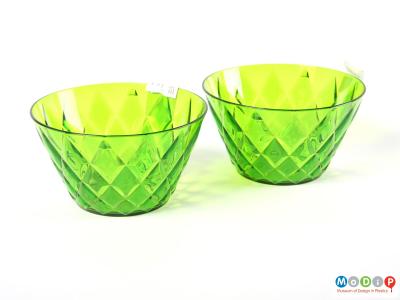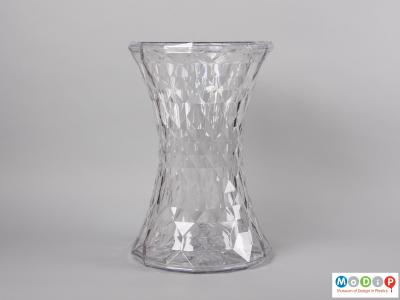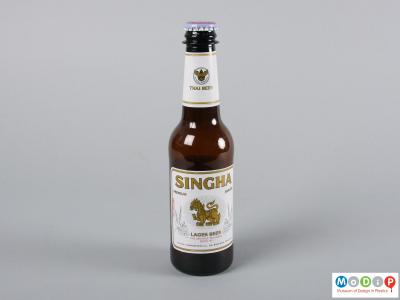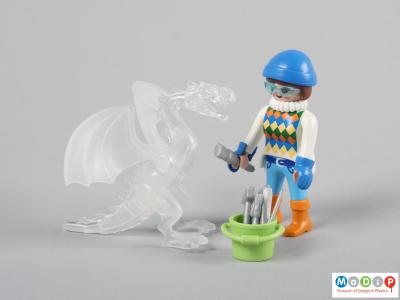The ability of plastics such as polystyrene and polycarbonate to mimic glass has been engaged by designers and manufacturers to produce objects for the domestic setting for a number of reasons.
The clear 1950s fruit bowl (1) and jug (2) along with the red 1970s ice bucket (3) use polystyrene to provide an affordable and less breakable alternative to the luxury cut and moulded glassware found in the home. The green Koziol Crystal bowl (4) is made of polypropylene to create a modern alternative exclusively for the German owned discount supermarket Lidl.
The large Stone Stool (5) by Kartell is made of polycarbonate and has geometric facets that reflect the light like a crystal chandelier. Polycarbonate is a material that is robust enough to withstand being sat upon and is much lighter than glass making it easy to pick up and move around.
The Thai, Singha beer bottle (6) is made of polyethylene terephthalate (PET). The same material is used to create the majority of drinks packaging bottles, including those for water and fizzy drinks. The brown colouring used here makes the bottle look remarkably like an equivalent glass beer bottle. The use of a metal cap rather than a plastic screw top adds to the illusion.
The dragon ice sculpture (7) is one of the first transparent Playmobil figures and is made using INEOS Styrolution’s Zylar 550, a methylmethcarylate butadiene styrene (MBS). This material provides practical toughness, good clarity and superior processing characteristics for injection moulding applications. Zylar is a good material for the high wall-thickness of this figure. Being thick the pieces take longer to cool than thinner sections and in other materials this can result in unsightly sink marks.

